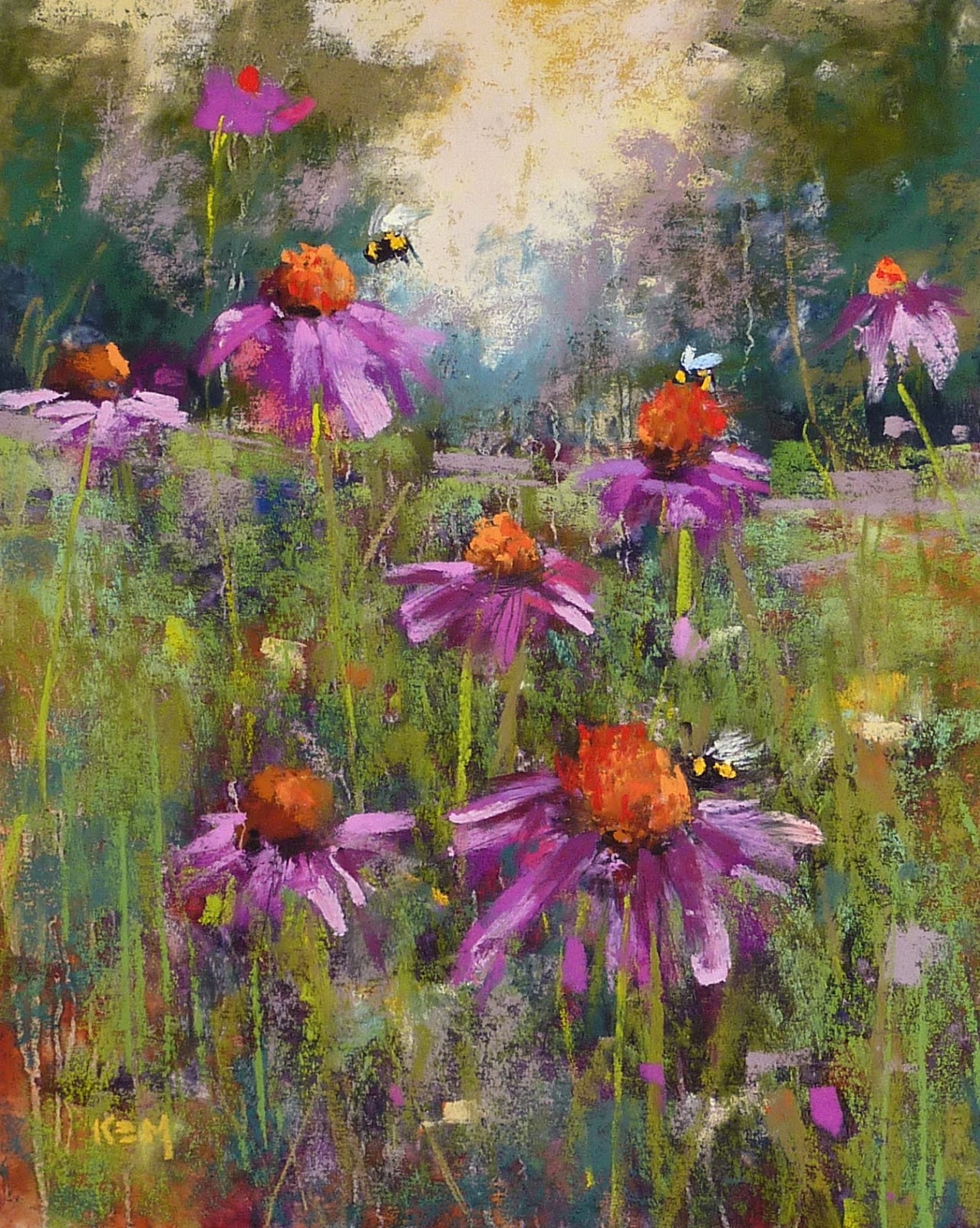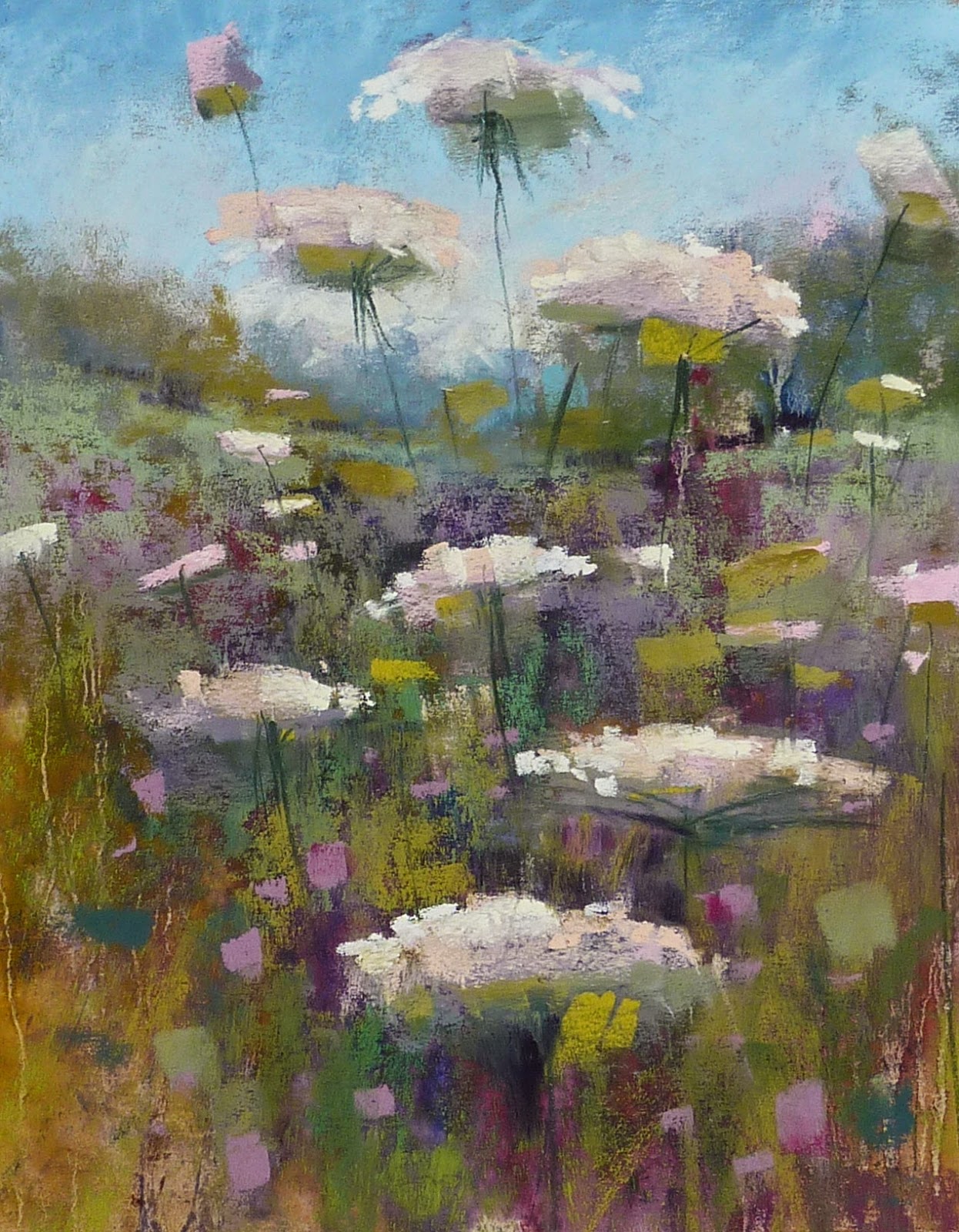 |
| 'Summer Days in Maine' 8x10 pastel on board ©Karen Margulis available for purchase $145 click here |
I begin by blocking in the dark values using several colors all the same dark value. Look at all the textures from the brushstrokes of the ground!
Next step is to paint the sky. I decided to go with a few pale lavenders for the sky and some pale yellows for the horizon. After I block in foliage I will go back and put in skyholes.
I work on the trees next using a cool blue green for the distant trees. I add some dark purples to the grasses and rub it in. I want to cover some of the yellow board so the top layers of grass will show up better.
I layer some greens in the grassy area. It skips over the texture leaving the suggestion of grass.
Now it is finally time for the flowers. These Lupines are a mix of purples and deep blue. I begin with a dark blue-purple.
I work on the Lupines using very soft Schminke and Great American purples. I am trying for a variety of shapes and sizes and interesting placement of each Lupine stalk. I want them to dance!
For the finishing touches I add some brighter greens for the stems and suggest a few leaves. I decide I need to reintroduce some of the yellow so I put in a few bright yellow flower dots. Finished! I enjoy how the texture of the board helps me be less fussy with all of the foliage! It does a lot of the work for me!
If you enjoyed this condensed demo you might like to try one of my pdf demo downloads. These demos are filled with photos and detailed commentary on each step of the painting. You can see the demos in my etsy shop here.





































